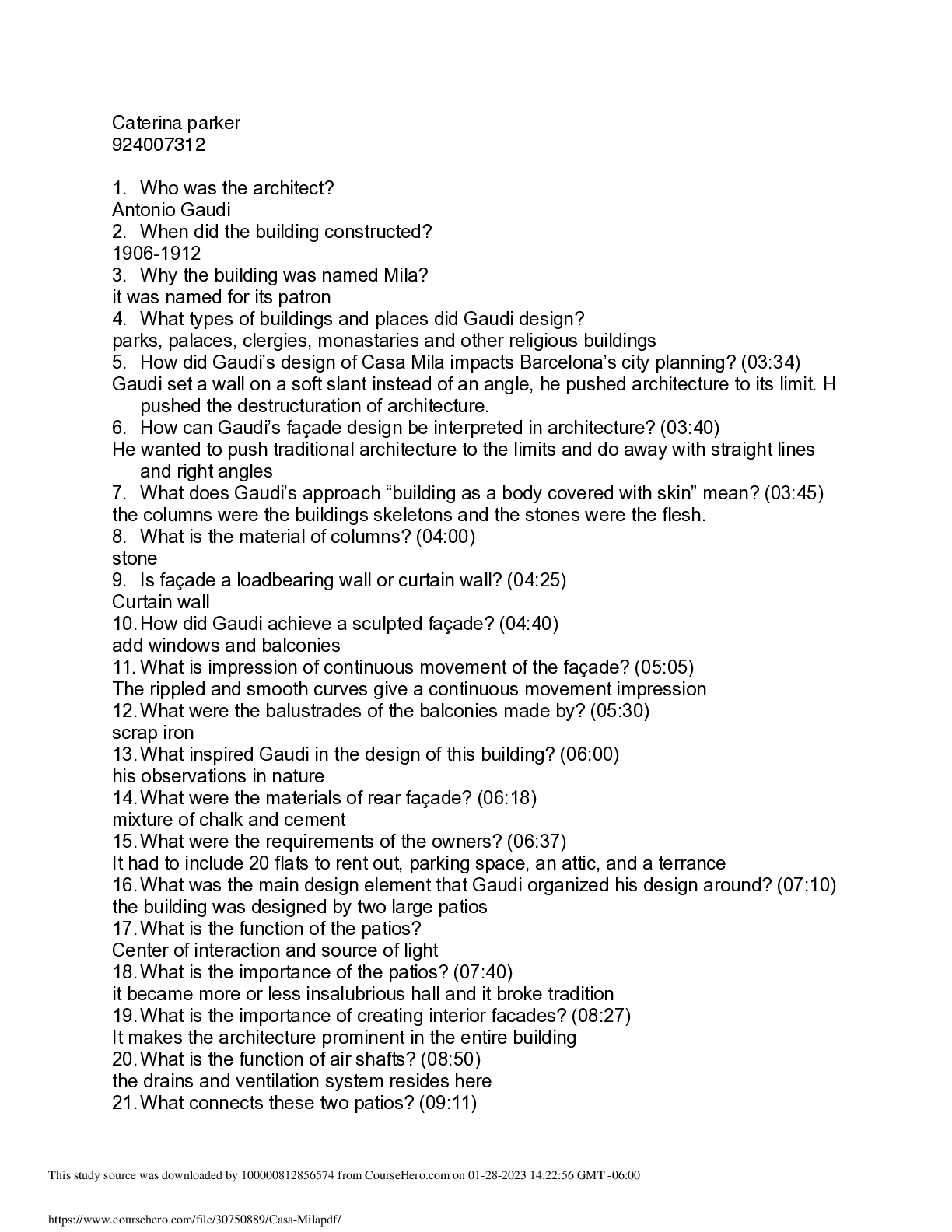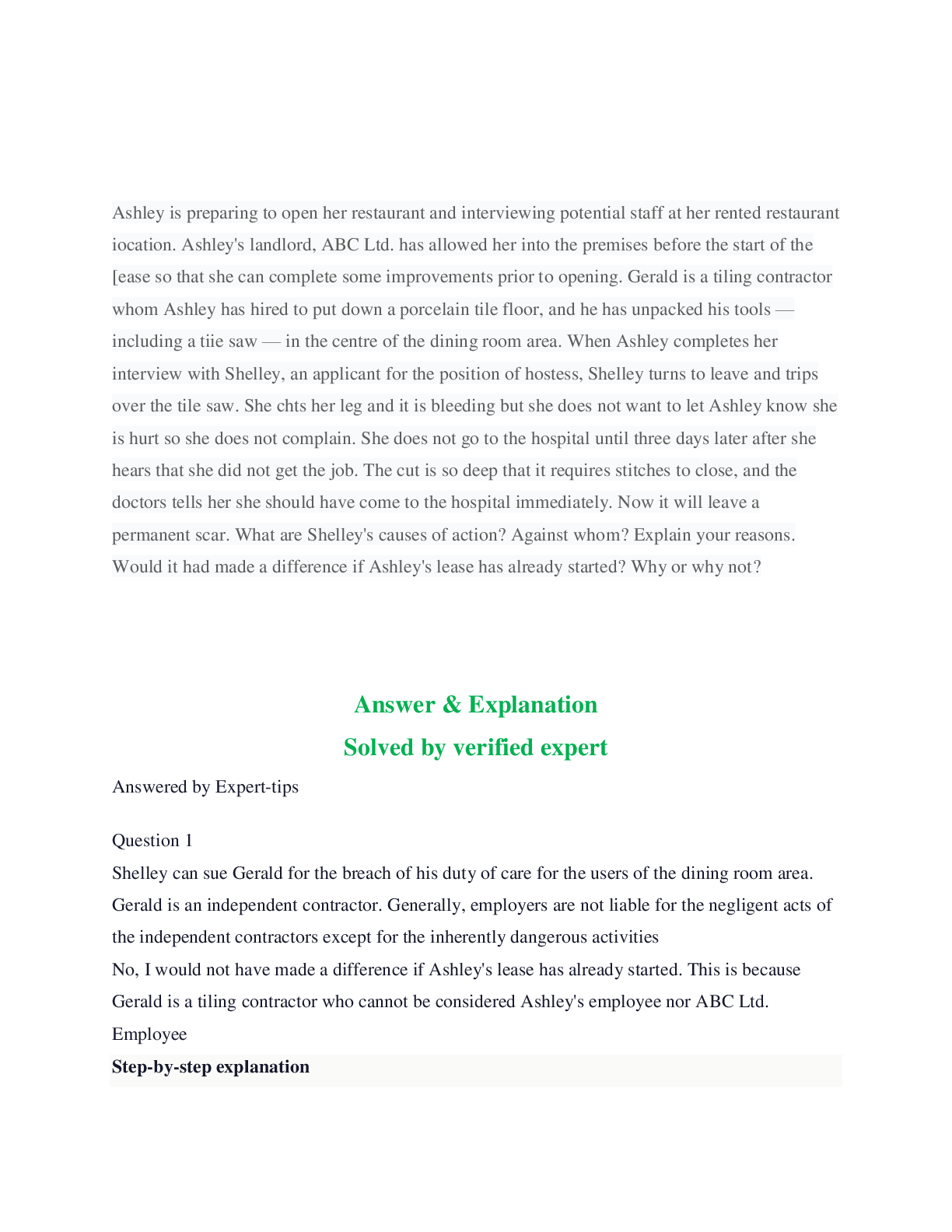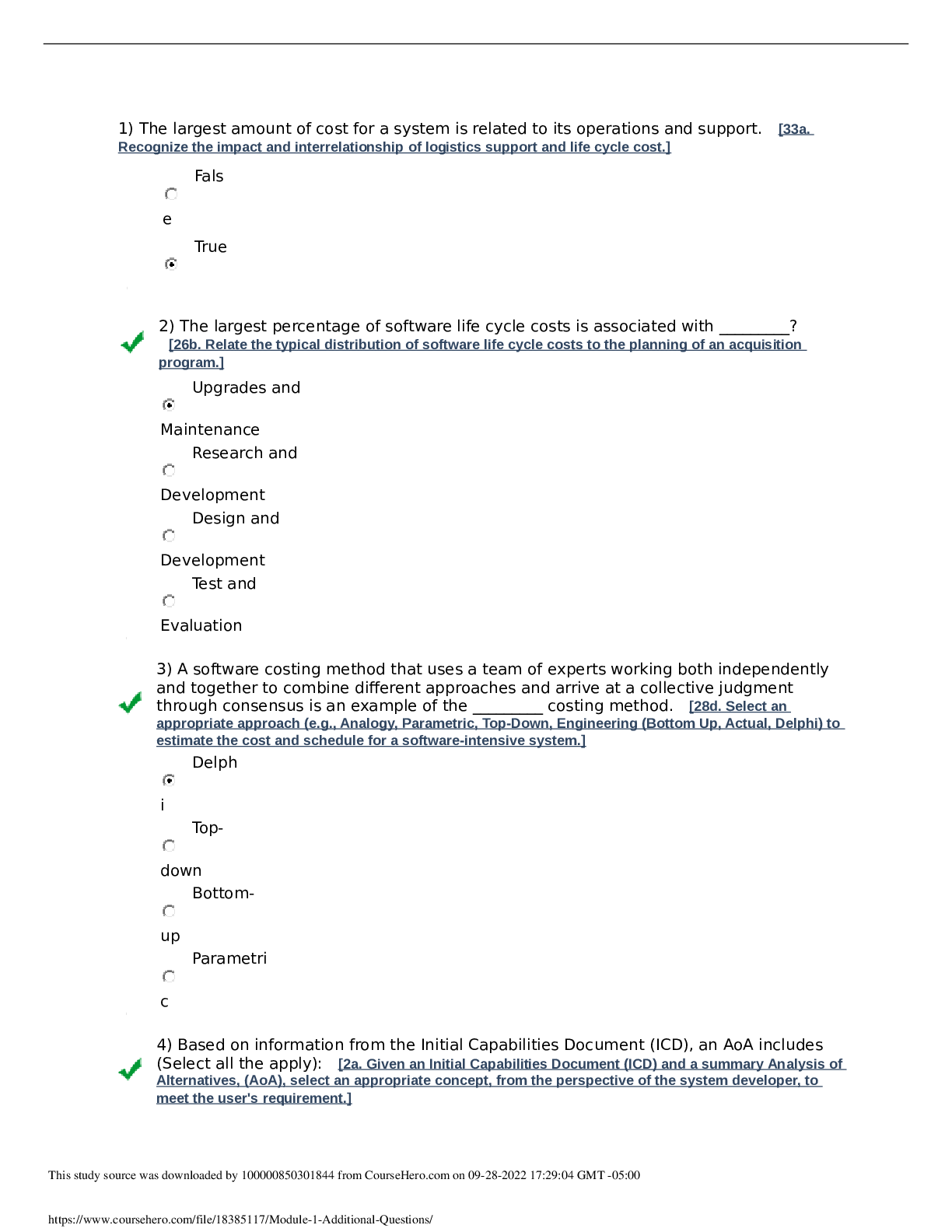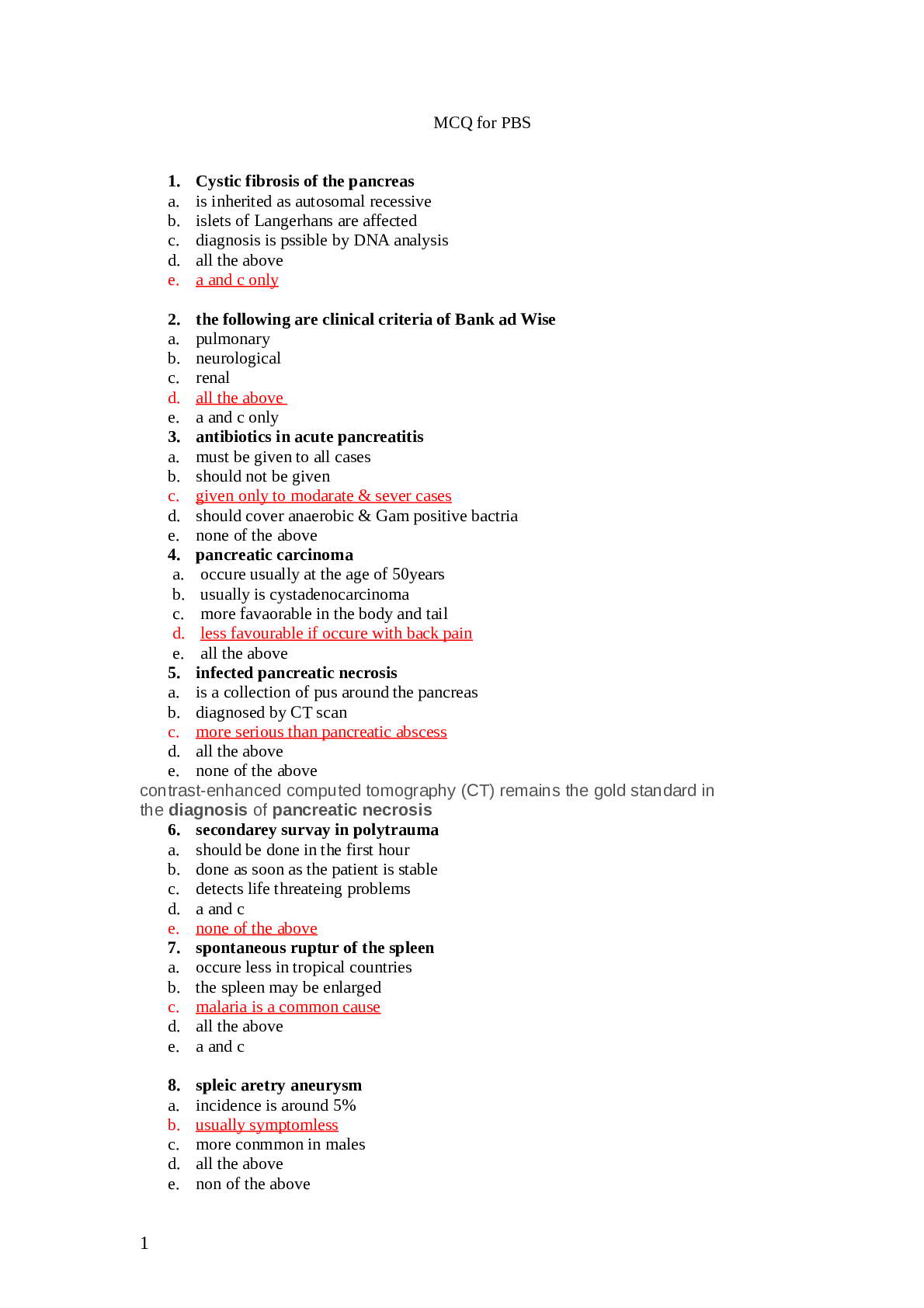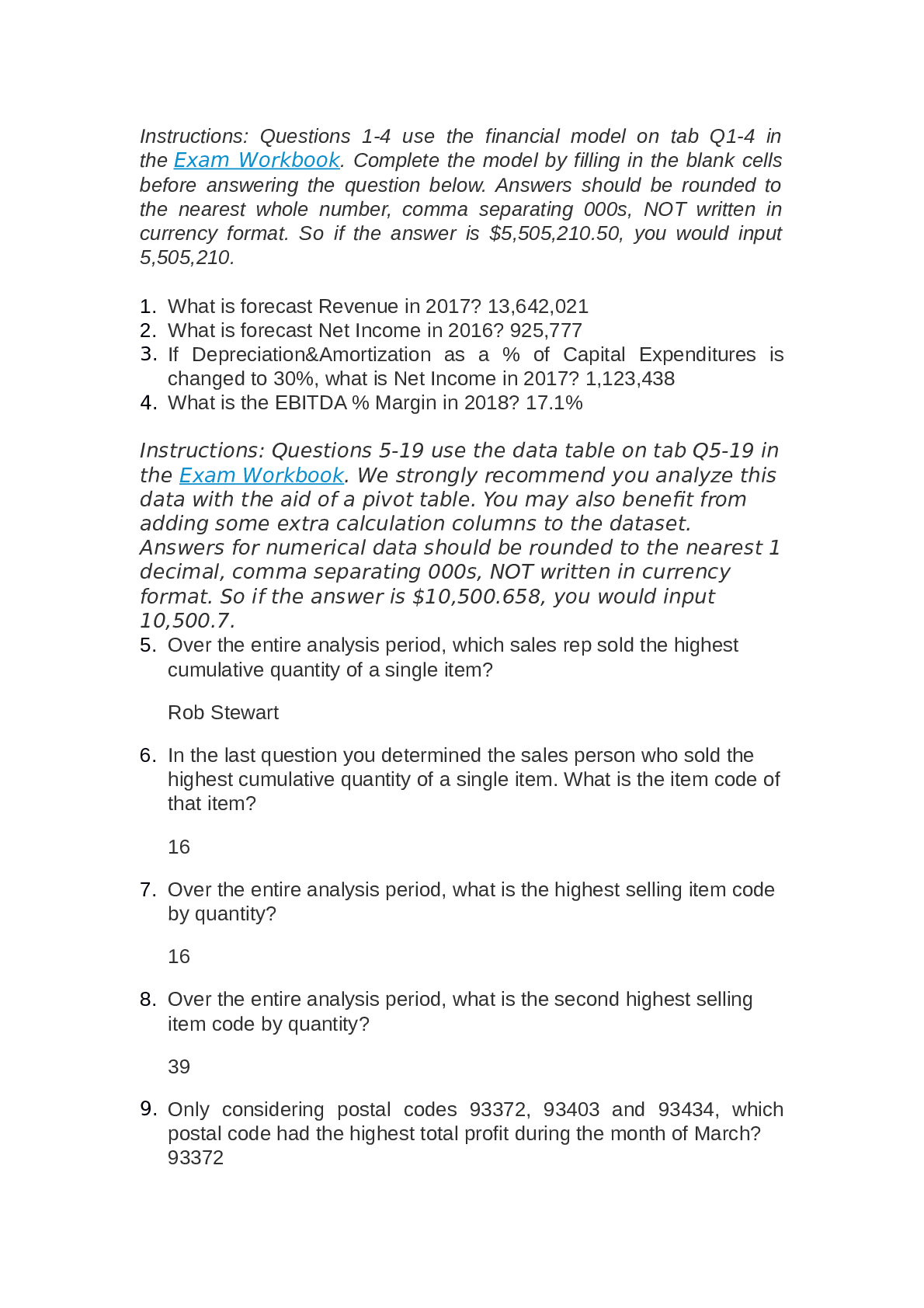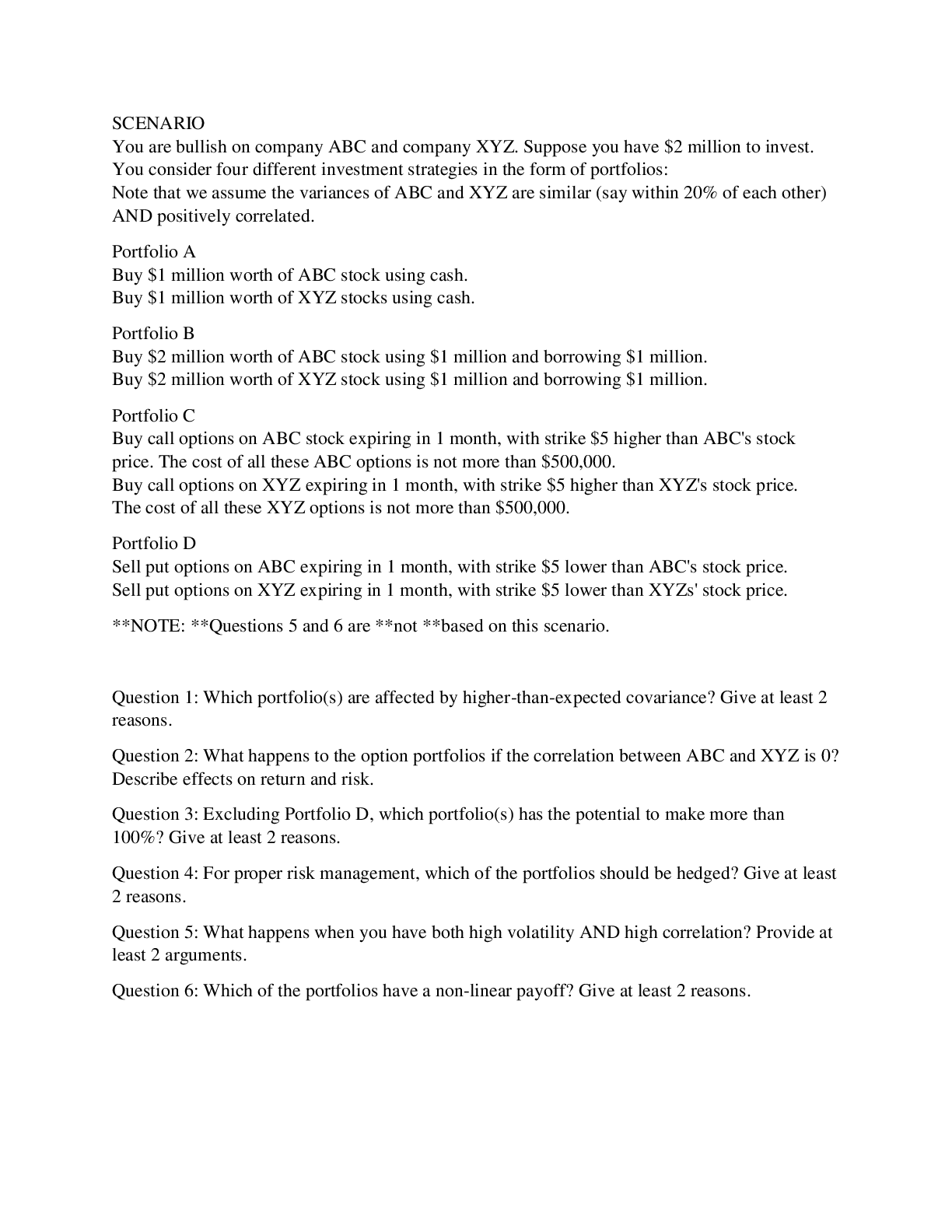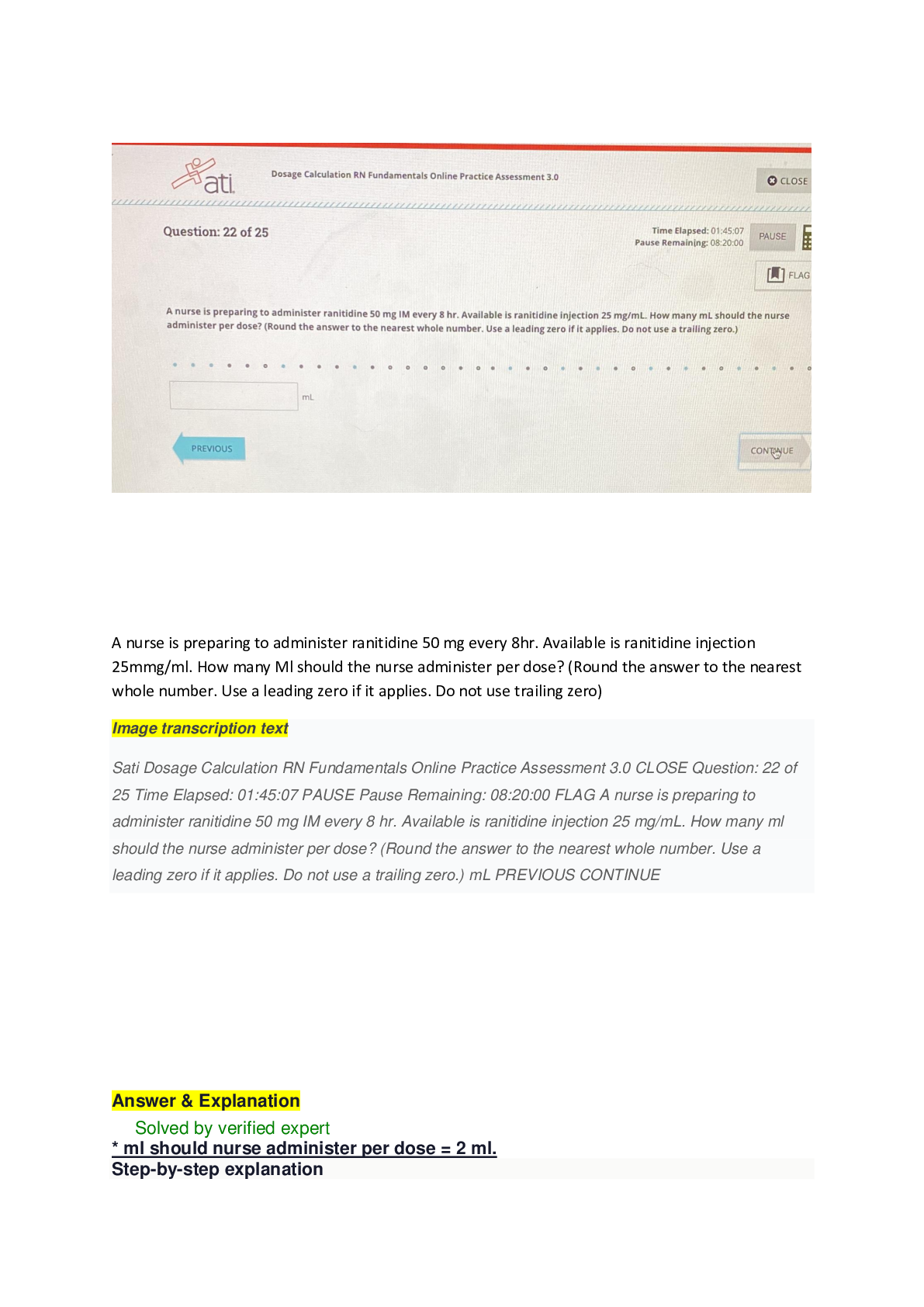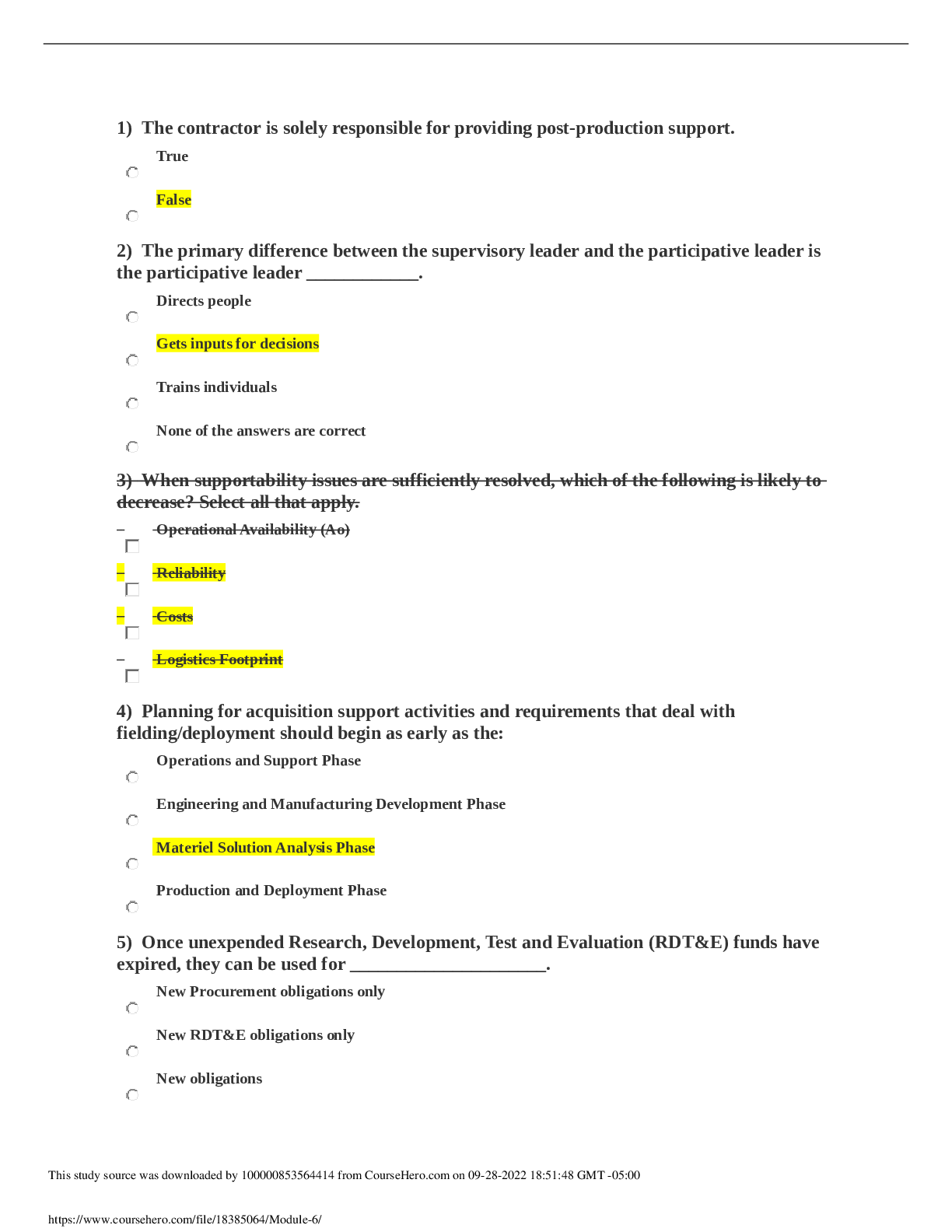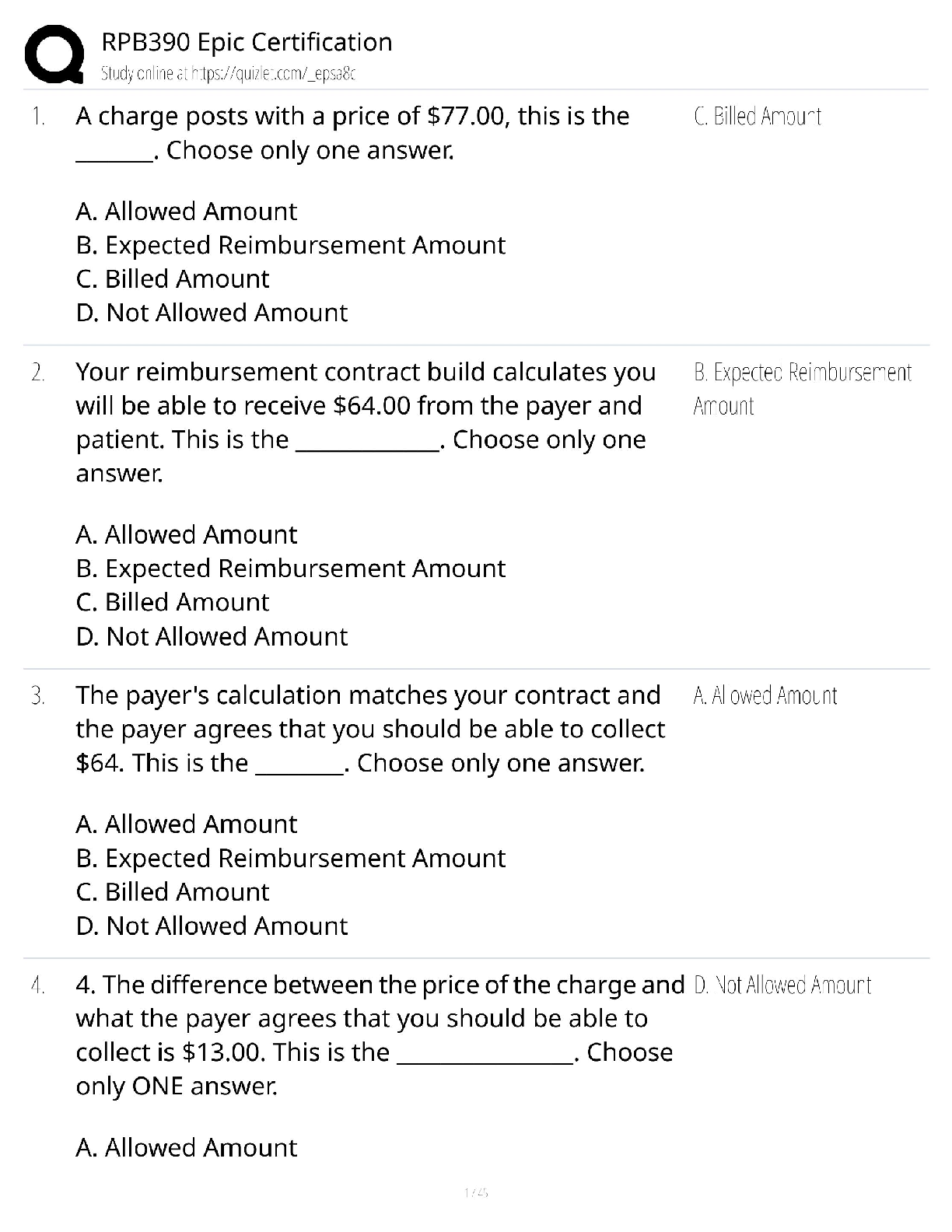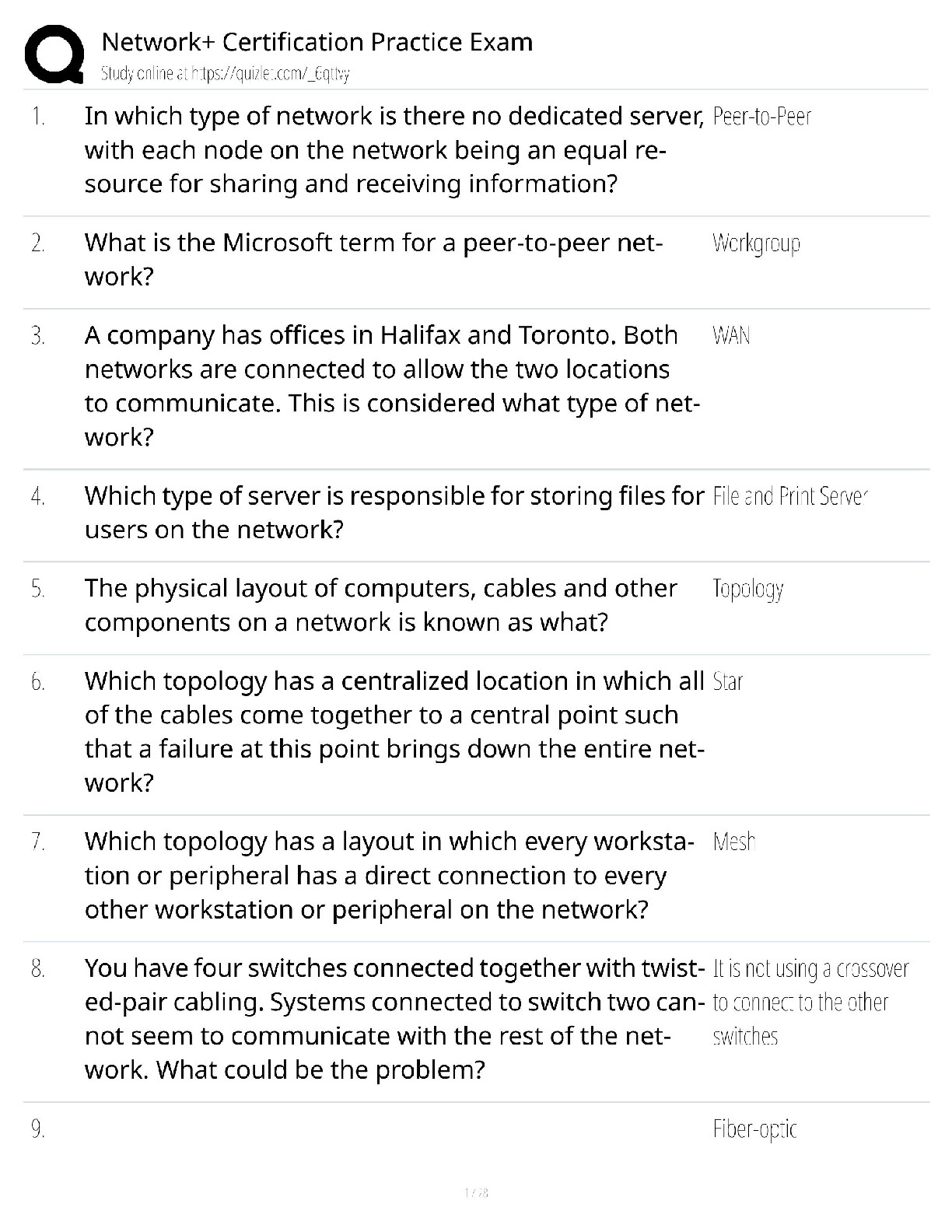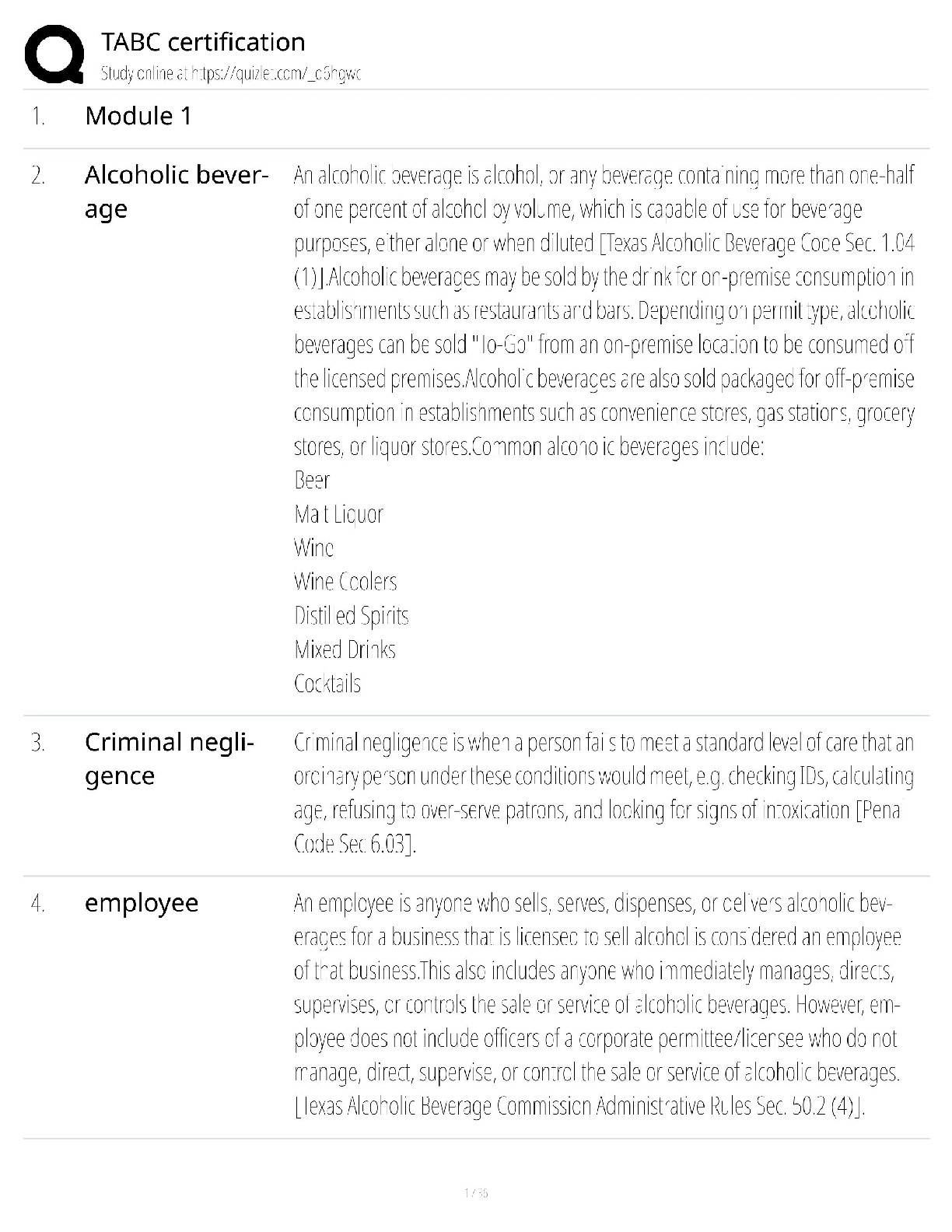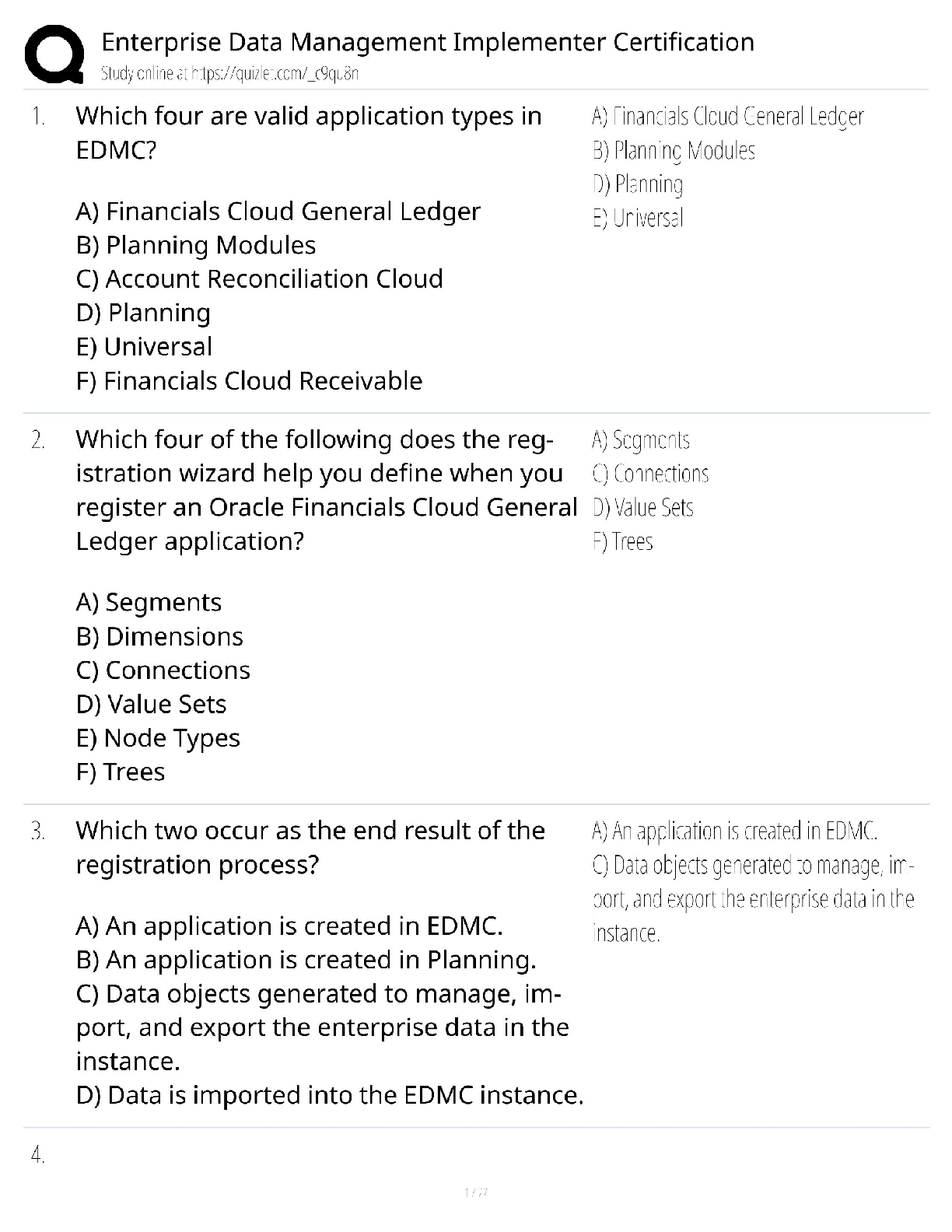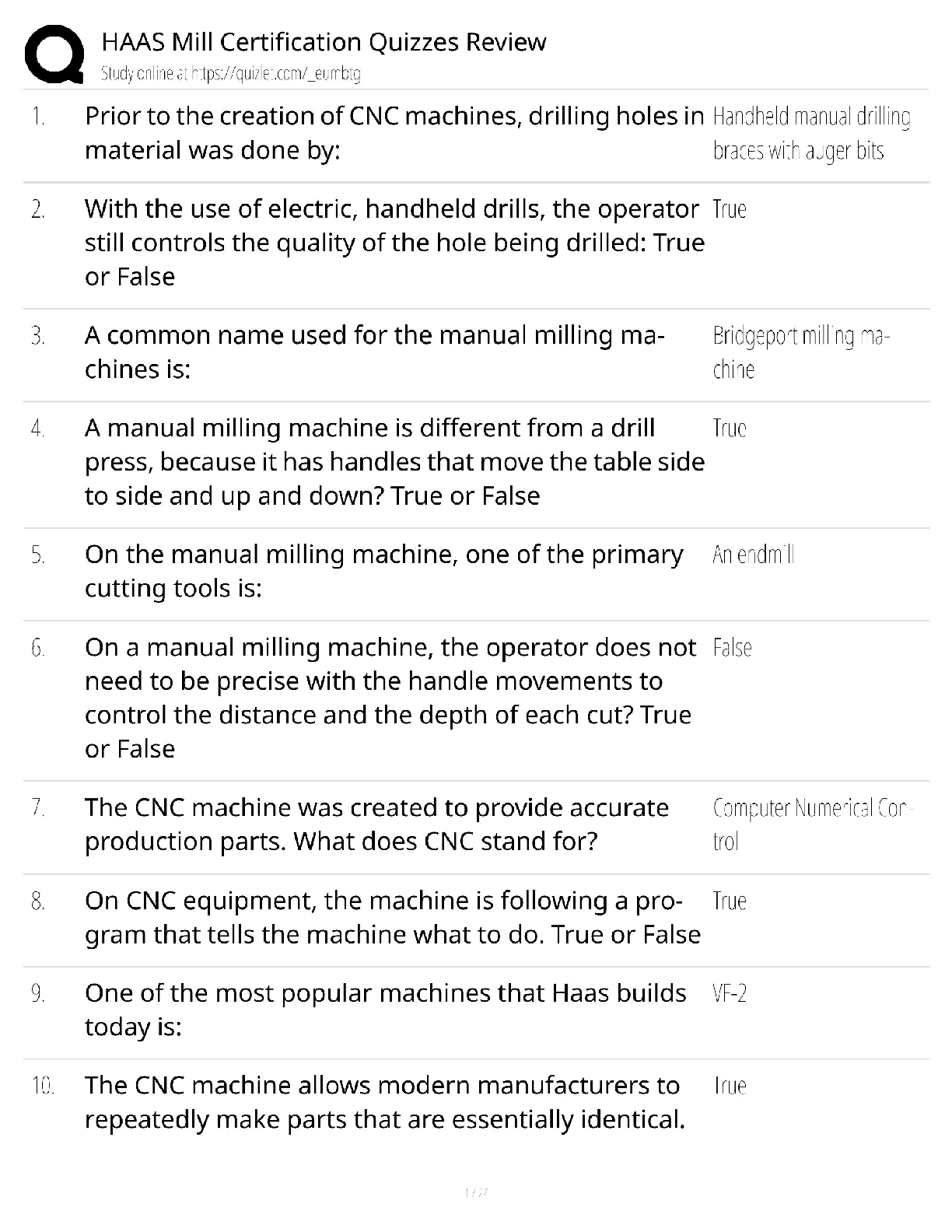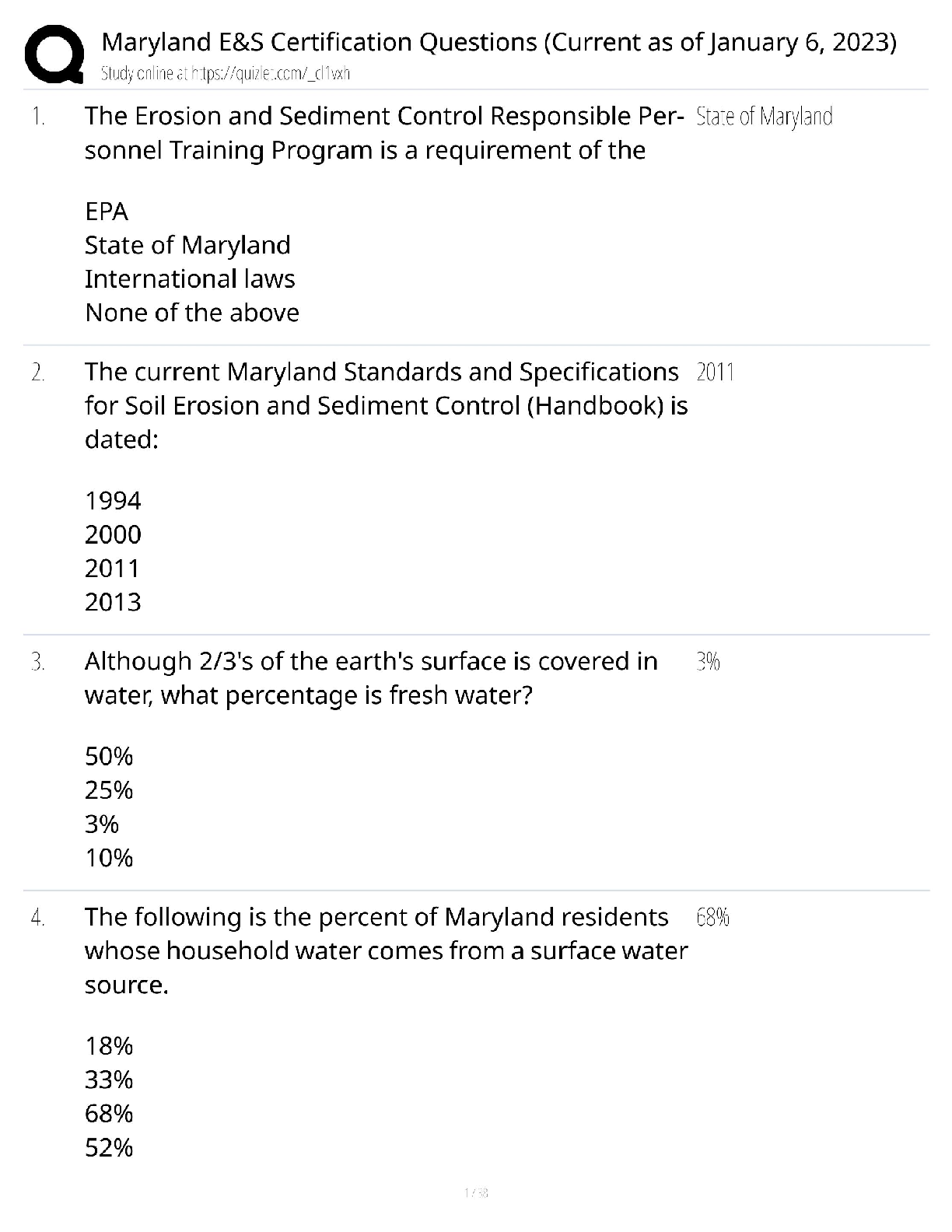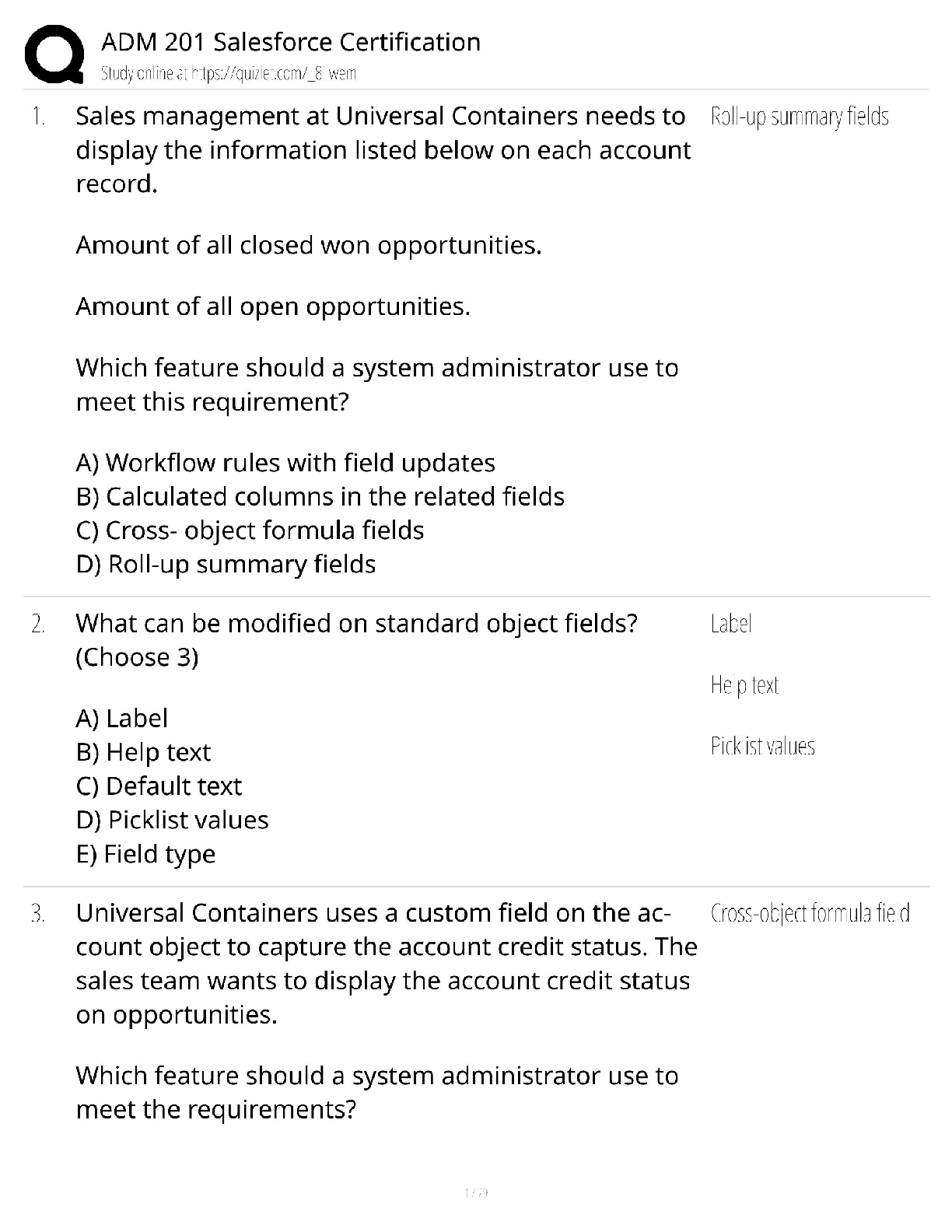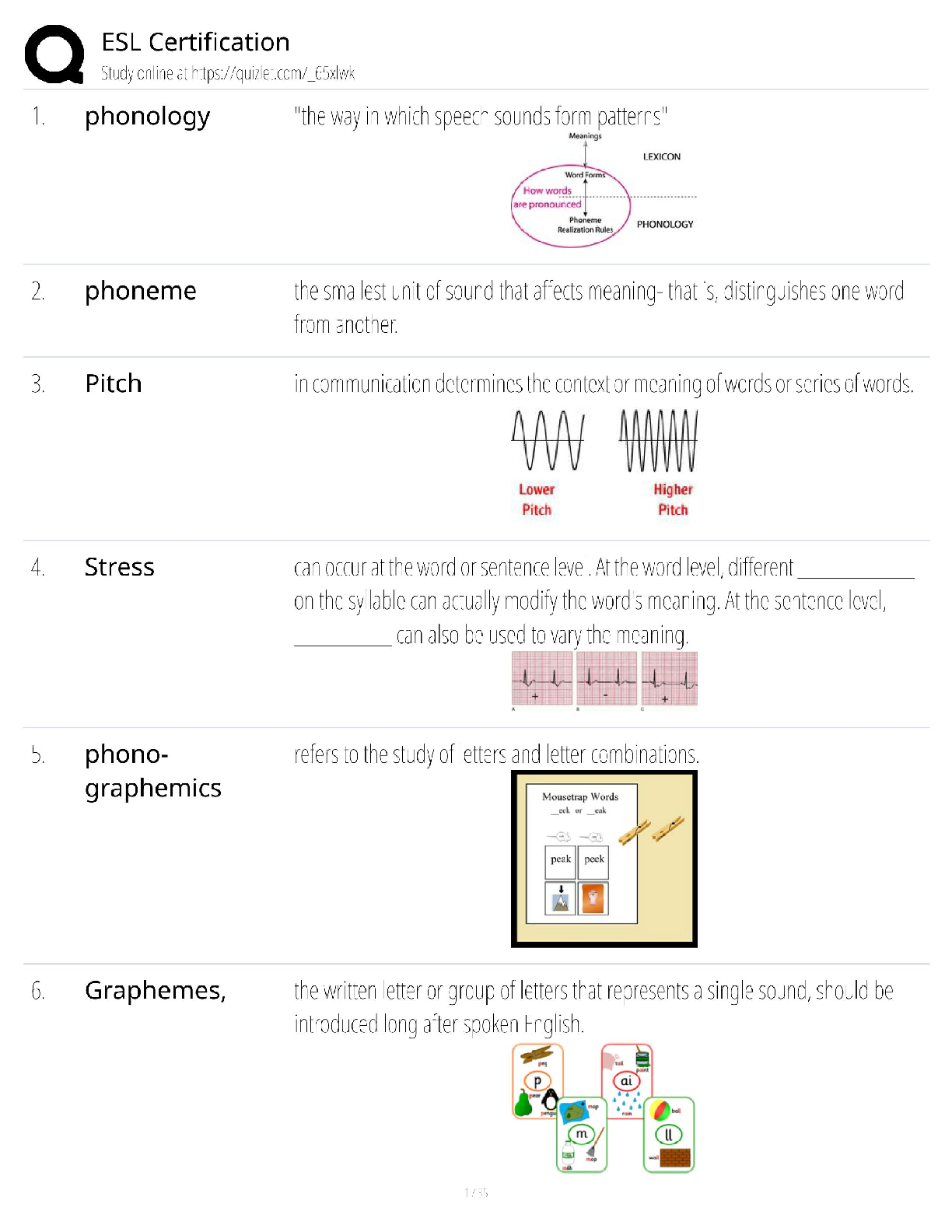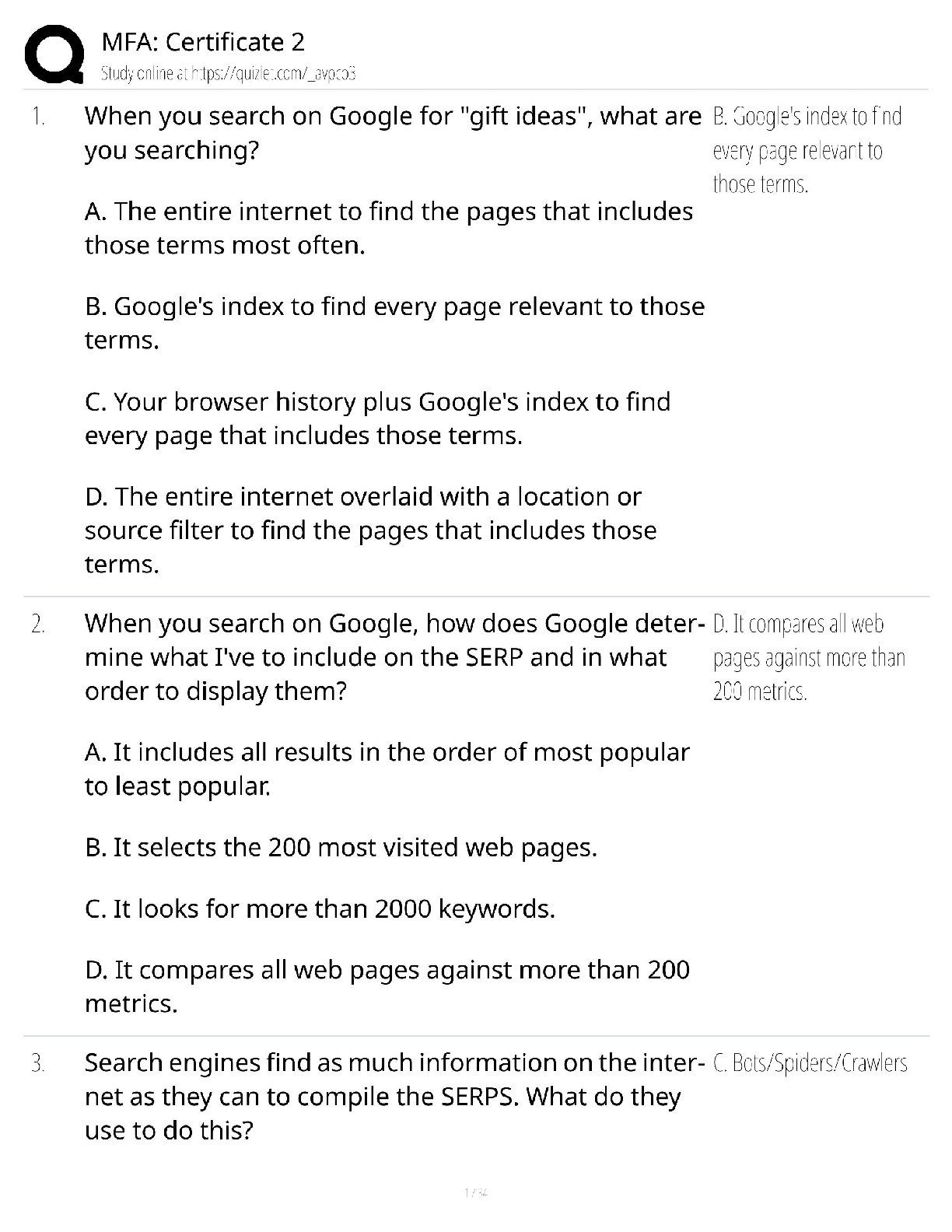Software Engineering > QUESTIONS & ANSWERS > Defense Acquisition University ACQ 202 Int Systems Acquisition Module 3 Exam 1 notes (All)
Defense Acquisition University ACQ 202 Int Systems Acquisition Module 3 Exam 1 notes
Document Content and Description Below
Lesson 3.1 - Source Selection Closed Captioning In this lesson you will learn some important aspects of the competitive source selection process. This process, when properly executed, enables us to ... obtain best-value contracts for the Government. We will cover the types of information exchanges allowed between the offerors and the Government, and how information exchanges help us understand the offerors' proposals which in turn helps the government make a best value selection. In addition, we will discuss how to prepare for and conduct negotiations with an offeror. We will also review and evaluate a prospective contractor's financial health and determine whether adequate financial resources exist to perform the contract. Our evaluation will enable the contracting officer to make a determination on whether or not the offeror is 'responsible' in accordance with the Federal Acquisition Regulations (FAR). The Source Selection Authority (SSA) determines the offeror whose proposal is the best value for the government. Source Selection Role of Contracting Officer: Focal point for answering RFP questions from offerors Control ALL exchanges with offerors After the RFP is formally released the FAR requires me to be the focal point when answering questions from potential offerors. This means you can no longer discuss any aspect of this procurement with anyone outside of the SSEB and you must refer all inquiries to me. In other words, I am responsible for controlling all exchanges with potential or actual offerors Source Selection Rule #1: Do NOT disclose procurement sensitive information to unauthorized personnel. The first rule of source selection is to be careful not to disclose procurement sensitive information to unauthorized personnel. This pertains to fact finding and information exchanges as well as all other aspects of source selection. The trend in information exchange is to be as open as possible, but avoid any exchanges that would give an advantage to any one offeror. During your evaluation of each proposal, you will more than likely have some questions particular to that offeror's proposal. You will need to put your questions in writing and submit them to me. Developing questions to be answered by the offeror is commonly referred to as "fact finding". I will then send your fact finding questions to the offeror and the offeror will provide an answer.Source Selection Fact Finding: Develop questions to be answered by offeror Put in writing and submitted to Contracting Officer Depending on where we are in the source selection process and the nature of the question, the FAR defines these information exchanges with the contractor as clarifications, communications and negotiations, which includes bargaining and discussions. Source Selection Information Exchanges as defined by the FAR: Clarifications Communications Negotiations o Bargaining o Discussions Information Exchange Diagram Fact-finding is that portion of the source selection process where the Government seeks to gain a complete understanding of the proposal and identify specific areas of concern. There are several types of information exchanges that support fact-finding activities. This graphic depicts the general information exchange process. The chart below shows the types of exchanges that are allowed during source selection and provides some details on each.Clarifications - Allows offerors to correct minor clerical errors or to comment on negative past performance if no discussions are anticipated. Clarifications - Allows offerors to correct minor clerical errors or to comment on negative past performance if no discussions are anticipated. Communications - Helps identify the offerors who will remain in the competitive range. Negotiations, bargaining, and discussions - After a competitive range is determined, is used to allow the offerors to revise their proposals in order to maximize the Government’s ability to obtain best value. Fact-finding - Occurs during all types of information exchanges to collect information from or about the offerors’ proposals. SSEB Meeting Evaluation Factors Factor 1 - Technical Approach (significantly more important than Management) Factor 2 - Management Approach slightly more important than Cost Factor 3 - Cost (slightly more important than Past Performance) Factor 4 - Past Performance There will be one team for each factor. The evaluation team members will individually evaluate their assigned factor and relevant subfactors one proposal at a time. Each team will then discuss their evaluations for that proposal and come to a consensus on the overall rating for it before moving on to the next proposal. Let me remind you that you will evaluate each proposal against the factors and subfactors contained in the RFP. Evaluation Process 1. Team evaluations 2. Team consensus and overall ratings 3. SSAC review evals and rank proposals 4. SSA determine contract awardee Following each team evaluation, the SSAC will then review and rank order the proposals and make a recommendation to the SSA. The SSA will then determine which contractor receives the contract. Safeguarding We all attended Connie's source selection training and understand the importance of safeguarding proprietary information contained in the proposals. These proposals are procurement sensitive, and we are bound to protect each offeror's proprietary information against accidental or intentional disclosure to anyone outside the Government SSEB and their Government technical experts. Disclosure Additionally, you should have disclosed any potential conflicts of interest before participating on this board. I trust everyone had an opportunity to disclose any potential conflicts of interest related to this acquisition. If not, please see me after the meeting. Cost Realism Analysis As Dan stated in the SSEB meeting, we are required to do a cost realism analysis on cost reimbursement type contracts in order to determine the probable cost of performance for each offeror.Cost realism analysis is an independent review and evaluation by the government of specific elements of each offerors' proposed cost that answer these questions: Is the proposed cost realistic for proposed work? Does the proposed cost reflect a clear understanding of the requirements? Is the proposed cost consistent with contractors’ technical approach? Best Value The probable cost that the government calculates should reflect the government's best estimate of the contract costs that would result from the offeror's proposed technical approach. The probable cost is used for evaluation purposes to assist the government in determining which proposal presents the best value. The specific cost elements that we are going to focus on are labor hours and rates. We can ask our technical evaluation team to determine if each offeror's proposed labor hours are reflective of their proposed technical approach. FPRA We will contact the cognizant Contract Administration Office (CAO) under DCMA concerning each offeror's proposed rates. Fortunately, all three of the firms competing for Firebird already have open contracts with the government, so current rate information should be available. In fact, DCMA may have a negotiated "forward pricing rate agreements (FPRA)" with each contractor. An FPRA is a written negotiated agreement between the government and the offeror that specifies the rates to be used in pricing proposals during a defined period of time. These rates represent reasonable projections of specific costs and may include rates for labor, indirect costs, as well as other cost areas. They provide consistency in proposal pricing and save time. Allowability: Reasonable, Allocable A key difference between government and commercial contracts is the issue of cost allowability. The government can determine the types and amounts of costs that can be included in a contract. Cost Allowability Five cost allowability criteria: 1. Reasonableness 2. Allocability 3. Cost Accounting Standards (CAS) and Generally Accepted Accounting Principles (GAAP) 4. Contract Terms 5. Cost Principles in accordance with FAR Part 31For negotiated contracts, a cost is allowable if it is in compliance with five criteria. If the cost fails to meet any of these criteria it is considered to be unallowable. [Show More]
Last updated: 3 years ago
Preview 1 out of 26 pages

Buy this document to get the full access instantly
Instant Download Access after purchase
Buy NowInstant download
We Accept:

Reviews( 0 )
$9.00
Can't find what you want? Try our AI powered Search
Document information
Connected school, study & course
About the document
Uploaded On
Sep 29, 2022
Number of pages
26
Written in
All
Additional information
This document has been written for:
Uploaded
Sep 29, 2022
Downloads
0
Views
197


